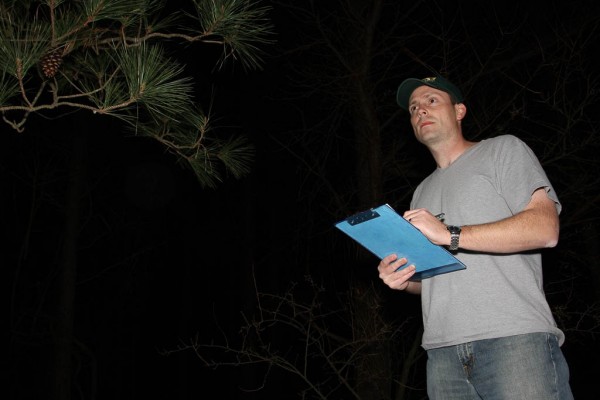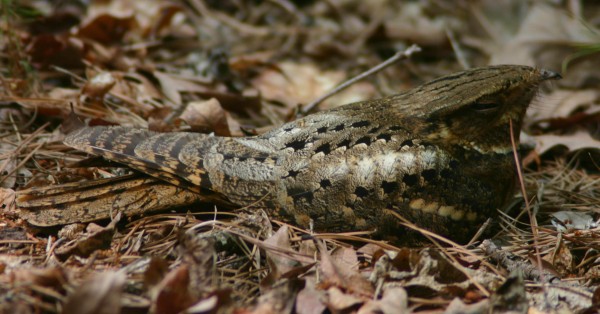United States Nightjar Survey wraps-up third year
Azalea on the Move Again
September 10, 2009Evidence for whimbrel population decline continues to mount
September 11, 2009
Written by Michael Wilson
September 10, 2009
Volunteers from across the country set out again after the sun went down to assist in the third year of the United States Nightjar Survey. The summer effort of 2009 resulted in the night survey of 249 routes that recorded: 348 common nighthawks, 708 chuck-will’s-widows, 392 whip-poor-wills, 168 common poorwills, 128 lesser nighthawks, and 1 common paraque.

Michael Wilson stops to count birds along a nightjar survey route in Virginia. Nightjar surveys are composed of 10 evenly spaced stops along predetermined route. Data are used to determine population trends of these nocturnal birds. Photo by Bart Paxton.
We continue to see program participation grow with nearly 400 volunteers adopting routes for the 2009 season. In addition, we added Pennsylvania routes into the program for the first year. Perhaps the only unfortunate event of this past season was that bad weather prevented a large number of volunteers from being able to conduct their routes. The number of rainy and overcast nights in May and June 2009 set weather records for many regions of the United States. The nightjar survey period is limited to only a few weeks each year to take advantage of bright-moonlit nights because nightjars call more frequently and more consistently at this time. Using these nights for survey ensures that survey counts are more precise leading to better conclusions from collected data. The obvious shortfall of this limited survey period is that volunteers have few choices for alternative survey dates when bad weather ensues.
The Nightjar Survey also benefitted this year from the added efforts of volunteers in Arizona and New Mexico who contributed their time to help refine protocols for the survey of common poorwills and lesser nighthawks. These efforts are being assisted with the coordination of USFWS biologists, Dave Krueper from the Southwest Region Migratory Birds Office and Carol Beardmore from the Sonoran Joint Venture. Volunteers in this region resurveyed their routes in different time frames to allow comparisons between twilight and nocturnal periods, and time of season.

Chuck-wil’s-widow on a forest floor, Virginia. Photo by Teta Kain.
The survey program continues towards it near and long term goals of determining the: 1) population trends of nightjars , 2) influence of landscape composition on abundance, and 2) refining of survey designs. We are currently working on distilling the 3 years of data to help determine the how whip-poor-wills and chuck-will’s-widows are impacted by human land use (e.g., urbanization, agriculture, silviculture) in the Mid-west and Southeastern United States. In addition, we are constructing targeted routes to gather information on isolated populations of conservation concern such as Stephen’s whip-poor-will in the high elevations of portions of Arizona and New Mexico.
We also continue to work with biologists and administrators on public lands to implement nightjar surveys on wildlife refuges, management areas, and military installations. This level of coordination will allow nightjar survey data to inform both land managers about populations on their public property and for those concerned with population trends within the broader region.
We are always in need of new volunteers and the return of current volunteers. We are extremely grateful to the many people that are helping by surveying birds at night during the most unusual time ever attempted for a national bird monitoring program. Your participation is the key to the success of this program. Please visit the Nightjar Survey Network website for more information and how to adopt a route.
Survey project sponsored by The Center for Conservation Biology (CCB).



